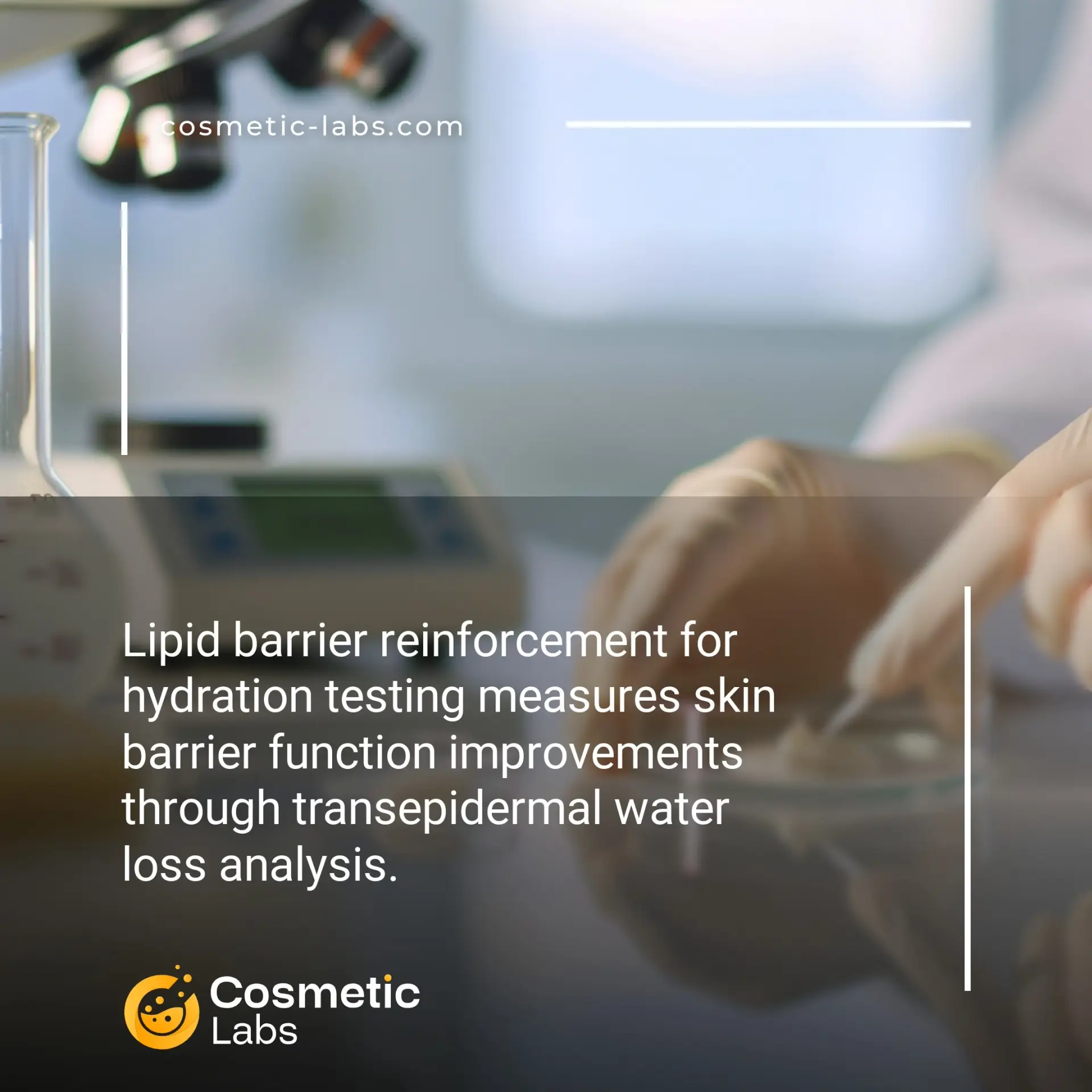Lipid Barrier Testing Services for Skincare Hydration

What is Lipid barrier reinforcement?
Lipid barrier reinforcement hydration testing is a specialized preclinical service that measures how cosmetic formulations strengthen the skin’s natural lipid layer to improve moisture retention. Labs use transepidermal water loss (TEWL) measurements and corneometry to evaluate how ingredients like ceramides and fatty acids enhance barrier function. This testing reveals quantifiable hydration improvements that support product claims and regulatory submissions, giving brands concrete data to validate their moisturizing formulations before market launch.
Why do you need this service?
Cosmetic labs use barrier function testing to validate moisturizers, serums, and anti-aging formulations before market launch. Teams measure transepidermal water loss (TEWL) and corneometer readings to demonstrate how ceramide-rich creams, hyaluronic acid serums, and lipid-replenishing treatments actually strengthen skin’s moisture retention. This testing helps brands substantiate hydration claims with quantifiable proof that satisfies regulatory requirements and builds consumer trust through evidence-based marketing.
Who provides Lipid barrier reinforcement services?
All cosmetic labs providing Lipid barrier reinforcement services
There is no company providing these services at the moment.
Lipid Barrier Reinforcement Testing for Enhanced Hydration
Cosmetic labs offer lipid barrier reinforcement testing to validate how effectively your formulations strengthen the skin’s natural protective barrier and improve moisture retention. This specialized testing goes beyond basic hydration measurements to assess barrier repair mechanisms and long-term moisture balance.
Barrier Function Assessment Methods
Labs use transepidermal water loss (TEWL) measurements to quantify barrier integrity before and after product application. Corneometer readings track moisture content changes over extended periods, typically 24-72 hours post-application.
Testing protocols include:
- Lipid composition analysis through tape stripping
- Barrier recovery time measurements
- Ceramide and cholesterol level assessments
- pH monitoring to track barrier stability
Clinical Validation and Data Analysis
Professional testing facilities run controlled studies with 20-50 participants to generate statistically relevant data. Labs measure barrier reinforcement through standardized protocols that track moisture retention rates and barrier recovery speed after controlled disruption.
Results provide quantifiable claims for marketing materials, including percentage improvements in barrier function and hydration levels. Testing typically spans 2-4 weeks to capture both immediate and sustained effects of lipid barrier enhancement ingredients.
Connect with specialized cosmetic labs through our platform to access validated barrier reinforcement testing services for your hydration-focused formulations.
Practical Applications of Lipid Barrier Reinforcement Testing
Product developers rely on lipid barrier reinforcement testing to validate moisturizer performance claims and optimize formulation strategies before market launch.
Anti-Aging and Repair Product Development
Labs measure transepidermal water loss (TEWL) reduction and stratum corneum lipid composition changes to validate barrier repair claims. Testing protocols track ceramide synthesis enhancement and cholesterol/fatty acid ratios over 4-8 week periods. Quantified barrier improvement data supports premium positioning and regulatory submissions for anti-aging serums and repair creams.
Brands use this testing to differentiate products targeting mature skin concerns. Results demonstrate measurable improvements in skin barrier function, supporting marketing claims about overnight repair and long-term skin health benefits.
Sensitive Skin and Dermatological Formulations
Testing services evaluate how gentle cleansers and therapeutic moisturizers strengthen compromised skin barriers. Labs assess lipid bilayer integrity using fluorescence recovery and electrical impedance measurements. Barrier reinforcement metrics help formulate products for eczema-prone, reactive, or post-procedure skin conditions.
Clinical data from these tests supports dermatologist recommendations and pharmacy channel placement. Brands document specific improvements in barrier function recovery time and tolerance thresholds for sensitive skin populations.
| Testing Method | Measurement Focus | Timeline | Key Applications |
|---|---|---|---|
| TEWL Analysis | Water loss reduction | 2-4 weeks | Moisturizer efficacy claims |
| Lipid Profiling | Ceramide/cholesterol ratios | 4-8 weeks | Anti-aging barrier repair |
| Impedance Testing | Barrier integrity recovery | 1-3 weeks | Sensitive skin formulations |
| Fluorescence Recovery | Lipid bilayer function | 3-6 weeks | Therapeutic skincare |
Ready to validate your barrier reinforcement claims? Connect with specialized cosmetic labs on our platform to discuss your testing requirements and timeline.
